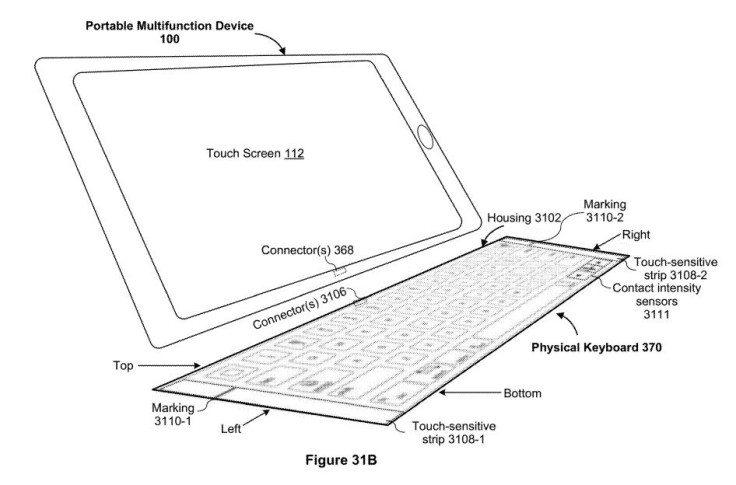Is Apple Redesigning iPad Pro’s Magic Keyboard?
KEY POINTS
- A new patent reveals that Apple is working on a new keyboard for the iPad
- The new keyboard will use a different kind of trackpad
- It will also feature sensors that will allow users to use their desks as trackpads
A new patent application published by the U.S. Patent and Trademark Office shows Apple is working on a new Magic Keyboard that will have a different trackpad.
The patent application, spotted by Patently Apple, describes a Magic Keyboard that's significantly different from the one Apple released for the 2020 iPad Pro recently. Whereas the current Magic Keyboard accessory has a trackpad located beneath the keyboard area, the patent describes a keyboard that has touch sensitive strips on the left or right, or both, sides of the keyboard.
The keyboard described in the patent could also feature other technologies such as multi-functional keys, which might replace keys that aren't frequently used in traditional keyboards, as well as touch sensors that will determine the force a user applies to specific keys and will respond accordingly.
The patent also described the new keyboard as having technologies that could detect a user's taps, swipes and gestures on nearby surfaces, effectively turning that surface (i.e. the user's desk) into a trackpad.
Here's a quick look at each feature mentioned above.
Touch Sensitive Strips
The touch sensitive strips located at either or both ends of the keyboard will effectively replace the trackpad, which will lessen the distance between the user and the iPad display. These strips will be very useful for scrolling pages, among many potential users. The strips will also be able to detect the speed of the user's swipe and respond accordingly (i.e. faster swipes mean faster scrolling).

Multi-functional keys and sensors
The new keyboard might also have “contact intensity” sensors capable of detecting the force of a user's presses on a key. For example, the arrow keys, upon sensing that the user is applying a heavy force on them as if to “force” the display to scroll faster, will respond by scrolling faster. This is but one of the applications of this technology.
Trackpad of sorts
Vibration sensors and microphones might be placed at the bottom of the keyboard to detect the user's taps, swipes and gestures on the desk where the keyboard is placed. These will effectively turn the space at the bottom of the keyboard into a trackpad of sorts.
© Copyright IBTimes 2024. All rights reserved.











